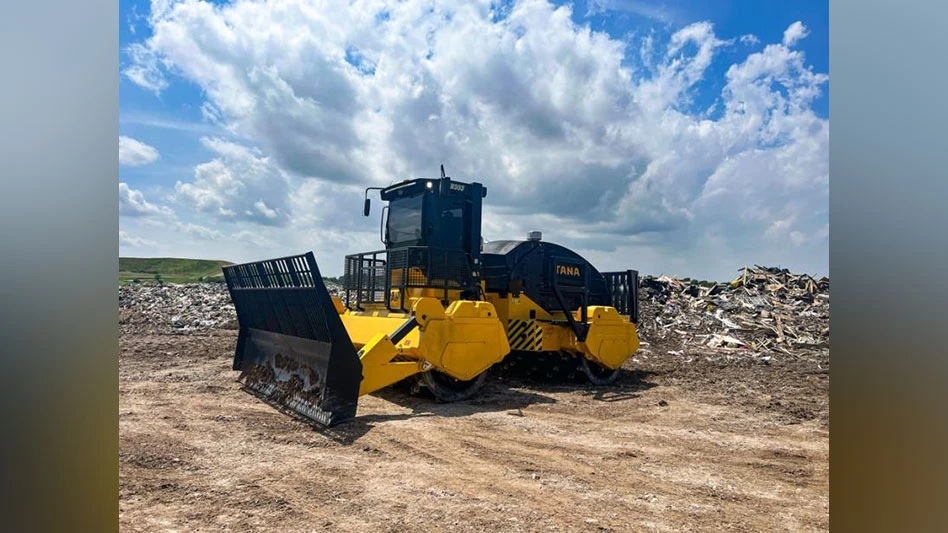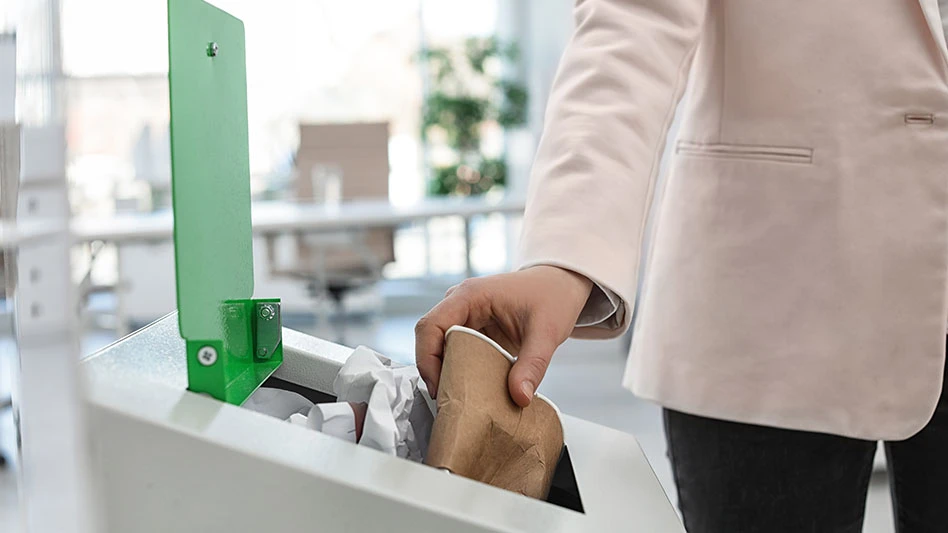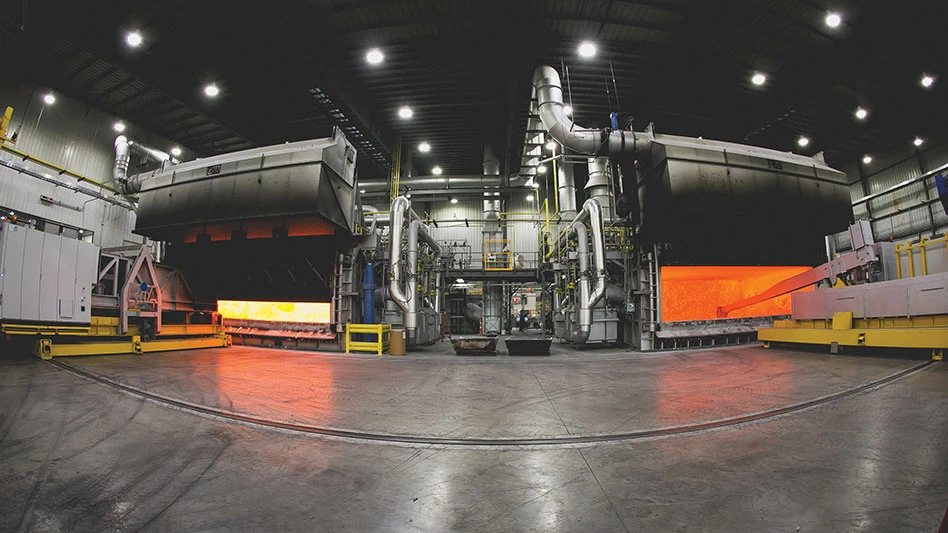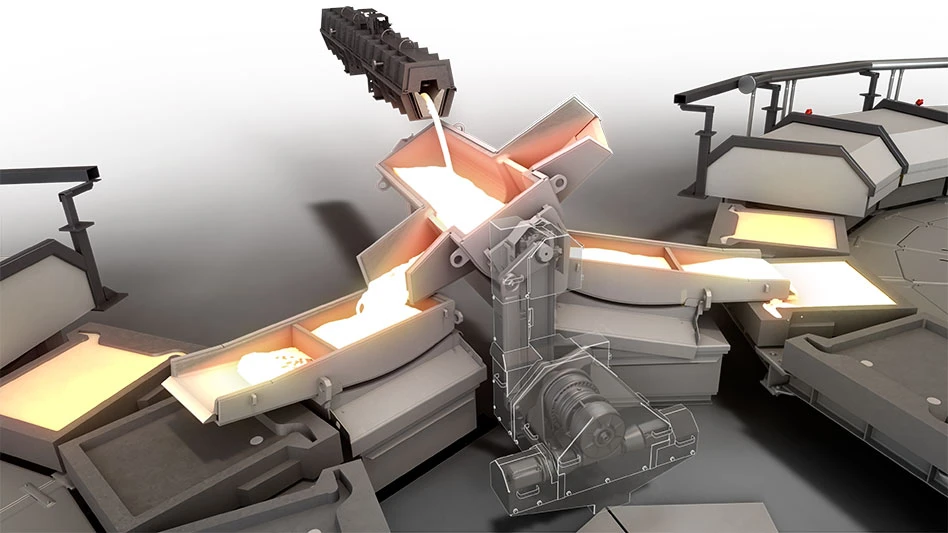A call for a long-term agreement on floor and ceiling prices for recovered paper came from José Aragües, director of Material Supplies for SAICA, Spain's largest paper manufacturer, and vice president of the Recycling Committee of CEPI, the body that represents the paper and board industry of the European Union.
Speaking at the session of the BIR Paper Division during the Spring Convention in Madrid, Aragües, president of Recipap which brings together paper makers and recyclers in Spain, said that "stable and adequate prices" would bring many benefits. Development of paper recovery would be sustained and no longer suffer the effects of highs and lows in pricing. Recovery would be self-financing and offer greater reliability at reasonable cost. He argued that speculative pricing, whether up or down, was in the long run bad for all those involved in the chain of paper use. Taking old corrugated containers as an example, Aragües proposed that the price should never be allowed to drop below 35-40 euros per metric ton - to his recollection it had never actually fallen below 40 euros. A ceiling should be set no higher than 55/60 euros per metric ton, and throughout the range recyclers would have a minimum 30 euros to cover their costs.
Since the EU Directive on packaging recovery in 1992, national collection systems had been introduced all over Europe. In general, paper makers and recyclers have not had sufficient input to this development, even though they were the 'top experts'. The authorities should "listen to our advice to provide recovery at lower cost," he insisted.
Setting the paper recovery scene in Spain, Aragües said that last year 3.8 million metric tons had been used, 14% or 560 000 metric tons consisting of imports. The utilization rate was 81%, but the recovery rate was still relatively low at 48.6%. However, the EU Directive had been a very positive influence, for since 1994 collection had risen by 80% in the context of a voluntary agreement with the government for a 'paper bank' system.
By the end of this year nearly 80,000 of these collection containers will be in place. This collection approach delivered lower cost and higher quality without conflicting with the free market, he noted. Although an optimum had yet to be reached, the cost of recovered paper sites was 34 euros per metric ton, compared with 72 euros for similar operations in France and 204 euros in Germany. The total cost of recovering paper was 60 euros per metric ton. But when paper was mixed with other packaging materials in a single container costs rose to 525 euros per metric ton. The problem was to persuade members of the public always to deposit paper in dedicated containers. The message had to be put across much more effectively.
Gerry West, Severnside Recycling, UK, and immediate past president of the BIR Paper Division, France, said he was "intrigued" by the speaker's proposal for a minimum and maximum pricing system. This was a step in the right direction, although he argued that to process OCC would involve a cost 50% higher than quoted.
Aragües countered that SAICA was engaged in the recovery of 1m metric tons a year and in Spain an operating cost of 30 euros a metric ton was quite realistic. Mr West said it would be very useful to examine costs on a joint basis and he proposed that this should be undertaken within the framework of CEPI and the BIR daughter organization, the European Recovered Paper Association (ERPA).
He recalled that within the next couple of years new test liner capacity of up to 1 million metric tons a year would come on stream in northern Europe, involving countries that had traditionally exported recovered material to Spain. Could domestic recovery cover any gap in supply? Little by little, replied Mr Aragües. Countries such as France, Italy, Britain and Spain had to raise their recovery rates. Germany, for example, had already reached a level that would be very difficult to enhance. In Spain, recovery had risen by 12% in each of the last three years whereas consumption had increased by 6% annually. Three years ago, he pointed out, Spain had imported 800 00 metric tons of recovered paper - a level reduced to 560 000 metric tons last year. He was not concerned about higher consumption elsewhere.
A report on the activities of ERPA came its President Mr Marten Kleiweg De Zwaan of BPB Recycling in The Netherlands. He said that following the joint declaration with CEPI last year on the need to recover an extra 10m metric tons in Europe between 1998 and 2005, the European Recovered Paper Council had been set up. This body, which embraced CEPI and ERPA with others still to join, had the task of working towards that target.
Attempts were being made, mainly by the German paper industry, to improve the quality of deinking news and news & pams, reducing inclusion of other material from 3% to 1.5%. Mr Kleiweg said that if the mills wanted higher quality they would have to pay for it. Experience in the Netherlands showed that as recovery rates rose, members of the public added other types of paper to containers intended solely for news or news & pams. So sorting costs became involved. He believed the matter might be resolved by the introduction of three grades - the first with 1.5%, the second with 3% and the third above 5%. There was also a move to change the description 'mixed papers' which suggested waste, and 'multi fibre' was a likely replacement. In addition, mills wanted to be able to determine the origin of recovered paper with the aim of ensuring there had been no contact with food or other contaminants. But ERPA was opposed as it saw this as a responsibility of the recoverer.
Trade with Asia a
little better
Turning to market reports, the meeting heard first from Alfred Hirt of Sanne, Kruse & Pape GmbH, Germany, on trade to Asia which had picked up a little during the last three months. It had otherwise been flat in terms of pricing and tonnage. The difficult financial situation of Asian Pulp & Paper had improved to some extent.
In Germany, he said, important new capacity would come on stream in the second half of 2002 - 1.6 million metric tons, mainly for test liner and medium with 500 000 metric tons for deinking news and inserts. Since 1992, 18 mills had gone out of production in the United States, and Hirt forecast that labor costs would lead to higher production in Europe, stabilization in the U.S. and increased output in the Far East.
Hubert Neuhaus of Erich Böhm GmbH said that in Germany stocks were high, demand satisfactory and prices a little lower. Here, as in the rest of Europe, pricing was no longer following export values. "The competitive situation puts us under a great deal of pressure," he said, "and the market could be stagnating."
Lower prices or the potential for decline were features of several European reports. In the UK, said some grades had lost 50% in value in the last six months and the bottom had not been reached. Yet mill stocks were not high and merchants had little in reserve, according to West.
A report on the U.S. market offered little sign of any short or even medium-term improvement in a grim market. Prices had declined again with woodfree deink grades suffering most. But deink news had held for the most part as collection was down a little and mill orders were constant. Overseas demand was weaker.
Kleiweg felt the outlook in The Netherlands was uncertain, but if more of the U.S. surplus was shipped to the Far East this would have a negative effect on Dutch sales in the region. In the longer term, however, the situation would improve because of new capacity being planned and built in Europe and the Far East.
Get curated news on YOUR industry.
Enter your email to receive our newsletters.
Explore the June 2001 Issue
Check out more from this issue and find your next story to read.
Latest from Recycling Today
- Fenix Parts acquires Assured Auto Parts
- PTR appoints new VP of independent hauler sales
- Updated: Grede to close Alabama foundry
- Leadpoint VP of recycling retires
- Study looks at potential impact of chemical recycling on global plastic pollution
- Foreign Pollution Fee Act addresses unfair trade practices of nonmarket economies
- GFL opens new MRF in Edmonton, Alberta
- MTM Critical Metals secures supply agreement with Dynamic Lifecycle Innovations






